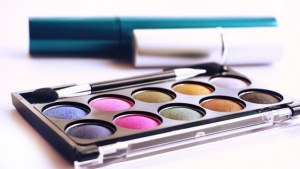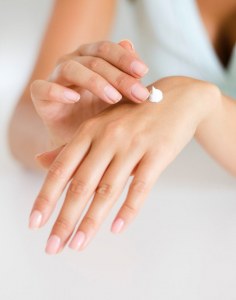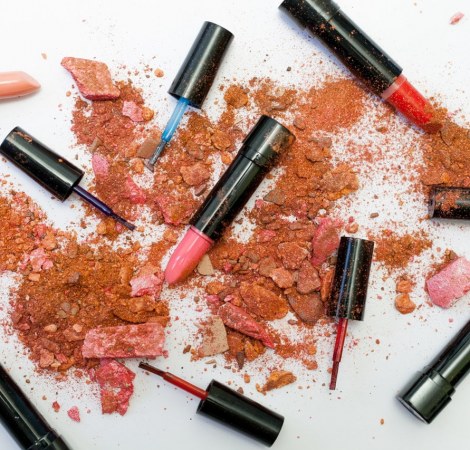- Overview of Cosmetic Market in Vietnam
- Detailed Regulations on Vietnam Cosmetics
- Product Proclamation Number for Cosmetics
- Requirements for Cosmetics Labeling in Vietnam
- Requirements for Cosmetics Claims
- Requirements for Cosmetics Advertising
- Register Your Cosmetics in Vietnam with Assistance from Cekindo
A rapid evolution in Vietnam’s cosmetic industry cannot be denied. There is a growing number of Vietnamese middle-class population, which leads to the substantial growth of the cosmetic market as demand for cosmetics, especially in personal care and beauty products, has increased over the last few years in Vietnam.
This rapid evolution has appealed to a myriad of investors, both local and foreign. According to a report from Statista, the cosmetic market in Vietnam has hit a staggering amount of VND 46 billion (USD $2,011 million) for its total revenue.
Read About Cekindo’s Cosmetics Product Registration Services in Vietnam
This positive result has been further supported by the country’s average per-capita spending in cosmetic, which is an average of USD $23,32/person per year. If being compared to another country in Southeast Asia like Thailand that shows an average spending of USD20/person per year, a huge growth potential of the cosmetic market in Vietnam is expected, especially with the changes in behaviour and preferences of the Vietnamese.
This article attempts to show the growth of Vietnam’s cosmetic market and provide detailed information on the labeling, claims, packaging and advertising of cosmetic products in Vietnam.

Overview of Cosmetic Market in Vietnam
According to a report prepared by Trade Government, in 2021 the cosmetic market in Vietnam reached USD $2.3 billion. When being compared to 2016, the cosmetic market reached only USD 1.78 billion, we can see how the cosmetic market in Vietnam grew significantly. Furthermore, when being compared to other industries, the cosmetic industry has seen the highest growth rate.
In addition, the market is also expected to achieve its full growth in the near future as the GDP is growing by over 7% annually. It is also expected that Vietnam’s middle-class population is going to reach 120 million by 2025.
When it comes to cosmetic brand, foreign cosmetic brands are still dominating the market in Vietnam with over 400 foreign cosmetic businesses currently being run, according to a report from The Society of Cosmetics of Ho Chi Minh City. This is equal to 90% of the Vietnamese market share. Among the 400 foreign cosmetic businesses, Korean brands stand tall (30%), followed by brands from European countries (23%), Japan (17%), Thailand (13%), USA (10%) and other countries (7%).
A lot of local people prefer Korean cosmetics because in addition to being affordable, the Korean brands are commonly associated with high quality and youthfulness, as can be seen from the advertisement.
With regard to local cosmetic brands, the cosmetic products produced in Vietnam are generally exported to other Asian countries with lower sales volume. Despite this, several local brands are striving and have won the hearts of the people in Vietnam, such as Lan Hao (Thorakao), Twinskin, and JSC Sao Thai Street.
RELATED: How to Import Cosmetics into Vietnam, Your Questions Answered
You may be wondering the reasons behind the small market share owned by local brands in Vietnam. The main reason is the financial capability that is rather limited. Therefore, there is no way for them to pursue further marketing activities, research and development activities as well as advertising their cosmetic products. Although the quality of the local cosmetic products is actually as good as the foreign ones, they have no idea on how to brand and market their products.
Good news for foreign investors, the potential in investing in the cosmetic industry in Vietnam has increased because of the reduced tax for import of cosmetic products. The government of Vietnam has signed trade agreements with many countries as an effort to bring the investment opportunities to another level. Through the agreements, tariff of imported cosmetics are to be reduced by maximum 5%.
Detailed Regulations on Vietnam Cosmetics
Cosmetic products are defined as products that are applied to the human body. Thus, they are strictly regulated in Vietnam.
In accordance with the Vietnamese regulations in the field of cosmetics, which follows the ASEAN Cosmetic Directive, all cosmetic products are required for registration before they can be imported, distributed and sold anywhere in Vietnam.
The main authority for cosmetic product registration is the Drug Administration of Vietnam (DAV), which is part of the Vietnam Ministry of Health (MOH). It is important to note that every cosmetic product that has a different SKU is required to be registered separately in order to be sold in the country. Regarding cosmetic product registration, it is rather flexible as it can be carried out by an individual or an organisation, provided that the registrant is the product owner of the cosmetic product or someone legally appointed by the owner.
Product Proclamation Number for Cosmetics
Once the cosmetic product registration has been approved by the MOH, a product proclamation number for every single cosmetic product will be issued in a form of receipt.
Furthermore, it is also mandatory ho have a Product Information File (PIF) for every cosmetic product that will be distributed. A PIF should contain information such as product summary and administrative documents, product quality, material quality and effectiveness/efficiency and safety
Requirements for Cosmetics Labeling in Vietnam
In accordance with ASEAN Cosmetic Directive, information that must be included on the packaging label of each cosmetic product sold in Vietnam should cover the following:
- Name and functions of the product, unless the presented form of product has been displayed clearly the product’s function
- Instruction of usage
- Full ingredients of the product formula. All ingredients must be clearly stated in accordance with the latest international nomenclatures
- The country of origin where the product was manufactured
- Weight and volume in British Imperial System or International System of Units
- Name and instruction of individuals or organisations in charge of distributing and selling the products. They should be indicated in Vietnamese language in accordance with the investment registration certificate or enterprise registration certificate. Other information on the labeling can be written in English or Vietnamese
- Quantification is presented with weight or volume, with regard to the meter system or the British system
- Manufacturing lot number
- Date of manufacture or date of expiry must be stated clearly and precisely in the format of DD/MM/YYYY or MM/YYYY. Instruction can be included in regards to product stability if necessary
- For products with shelf life fewer than 30 months, the date of expiry is mandatory and must be printed on the label
- Warning statement about the usage safety (if required)
All labels must be clearly printed on the packaging, so that consumers can easily see them. Information must not be blocked or separated from the packaging of a cosmetic product.

Requirements for Cosmetics Claims
It is not only labeling that is deemed important in Vietnam. Each and every cosmetic product that is to be manufactured in or imported into Vietnam is required to have proper claims before it can be distributed or sold in the country. As such, approval of claims for the relevant authority is required.
Claims of benefits are allowed, provided that evidence and reports are available. For medicinal or therapeutic benefits, approval is subject to individual assessment by the national authority.
You are not allowed to have claims that include scars elimination and aging reversal (for skin products), hair loss reversal and permanent dandruff removal (for hair products) and sweating prevention (for deodorants). Further details can be provided to you by Cekindo upon request.
RELATED: Luxury Cosmetics Brands are Pouring into Vietnam from All Over the World
Requirements for Cosmetics Advertising
Cosmetic advertising on any of these media: radio, television, internet, newspapers, magazines, posters, events, etc. is regulated under the Vietnamese Law and must be approved before being shown to the public.
The content of cosmetic advertisement must be appropriate and not misleading. It should conform to effectiveness, safety and quality of the product in accordance with the ASEAN Cosmetic Directive.
To obtain approval for cosmetic advertising, the following documents are to be prepared:
- Advertisement application that has been filled out.
- A copy of the cosmetic product registration with seal from the product owner or organisation.
- A copy of enterprise registration certificate with seal.
- An authorisation letter from the product owner for the person or organisation that registers for the advertisement.
- The advertisement scenarios with clear descriptions of the music, pictures and contents used.
- The subtitles materials of the product’s properties and utilities in case the advertised content and the presented content at the seminar or the cosmetic introduction event show the cosmetic’s properties and utilities that are outside the presented content in the cosmetic product proclamation report.
Register Your Cosmetics in Vietnam with Assistance from Cekindo
Throughout the years, Cekindo has successfully assisted many clients to enter the Indonesian market through our comprehensive range of business solutions.
Now, Cekindo has expanded to Vietnam and with our team of legal specialists and professional consultants, we are more than happy to assist you with cosmetic product registration in Vietnam. What is more, we can also assist clients that want to start a cosmetic business in Vietnam by establishing a company.
Get in touch with us by filling in the form below.
